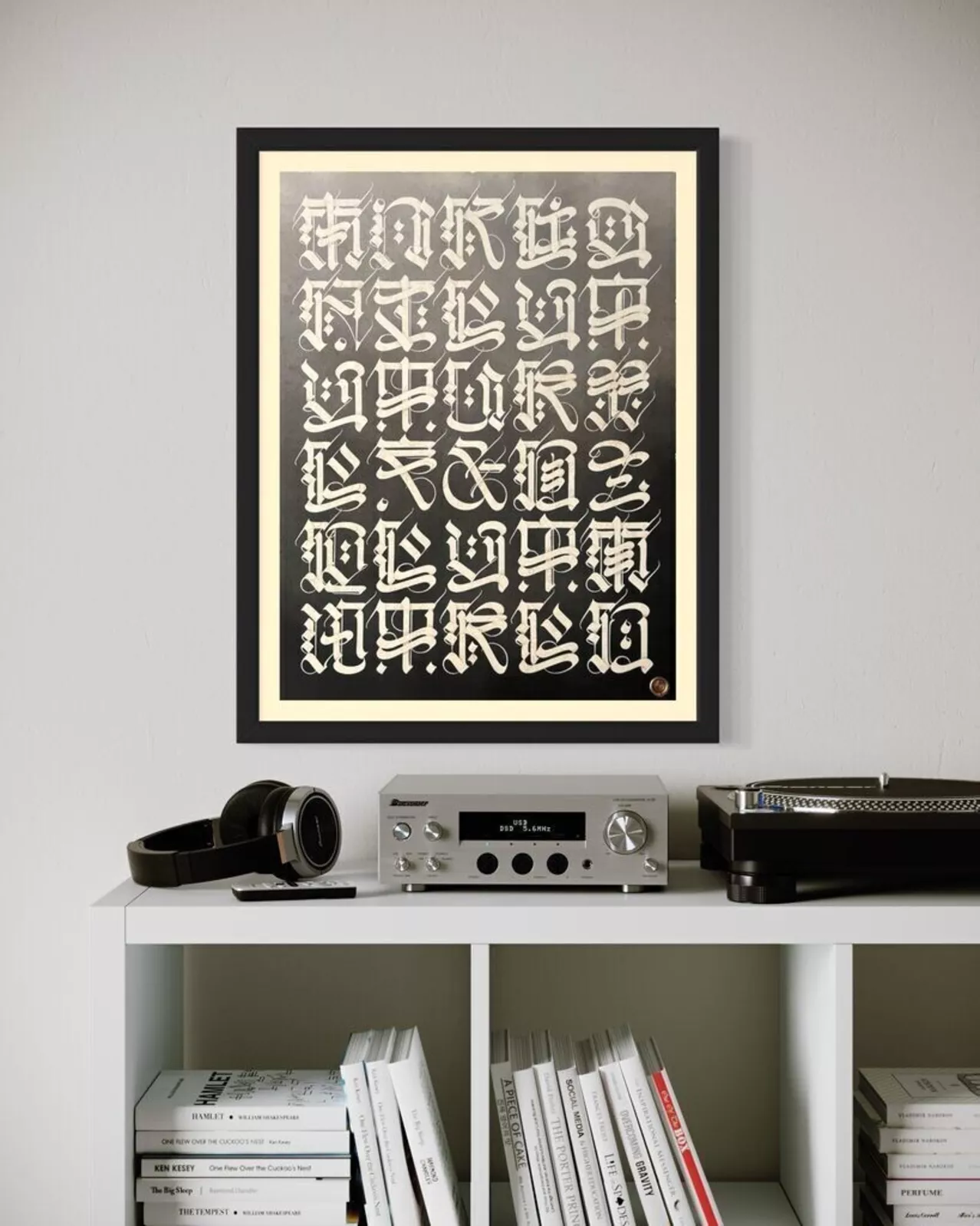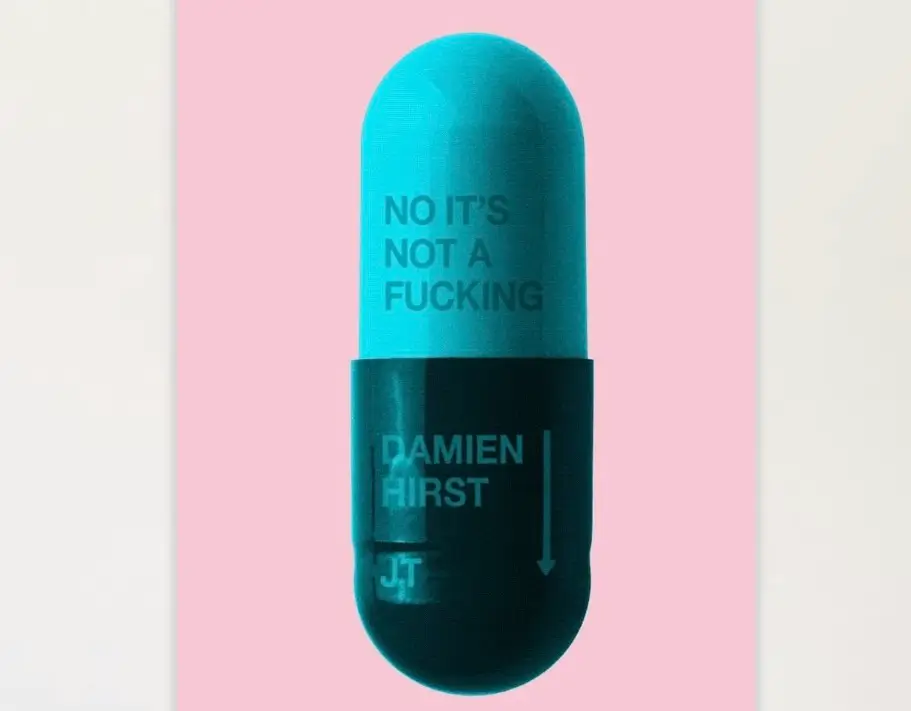Few artists have transformed the relationship between pop culture and urban space as profoundly as Invader. Known for his mosaic installations inspired by retro video games, the French street artist has spent decades “invading” cities across the globe with his signature pixelated characters. In Rubik Shot Red Marilyn [NVDR1-4], 2023, Invader returns to one of his defining themes — the intersection of digital aesthetics, celebrity iconography, and analog materiality — through the surprising medium of Rubik’s Cubes.
This work belongs to his celebrated Rubikcubism series, a body of work that reimagines iconic figures using the six-colored cube as both pigment and pixel. In Rubik Shot Red Marilyn, Invader translates Andy Warhol’s Pop Art muse — Marilyn Monroe — into a three-dimensional mosaic of modular geometry, merging the language of street art, video games, and postmodern portraiture.
evolve
Invader’s practice began on the walls of Paris in the late 1990s, with small tile mosaics depicting characters from Space Invaders — a rebellion against both the ephemerality of graffiti and the slickness of digital culture. Over time, his interventions expanded into a global network, a kind of “map” of contemporary visual identity spanning Los Angeles, Hong Kong, Tokyo, and São Paulo.
Yet by the early 2000s, Invader began bringing his obsession with pixelation indoors. This shift gave birth to Rubikcubism, a technique that uses hundreds of manipulated Rubik’s Cubes to form intricate compositions. Each cube, with its 54 faces of six possible colors, functions as a modular pixel. The artist rotates and arranges them in ways that emulate low-resolution digital images.
This material — playful yet rigid — became a new vocabulary for Invader’s commentary on mass media. Rubik Shot Red Marilyn is emblematic of this evolution, representing not only a continuation of Warhol’s Pop lineage but also a reflection on how images circulate in an era of infinite reproduction.
flow
At first glance, Rubik Shot Red Marilyn is a bold, geometric interpretation of Warhol’s famous 1967 Marilyn Monroescreen prints. Invader deconstructs the image into its chromatic essence — red, yellow, blue, white, green, and orange — using the inherent palette of the Rubik’s Cube to mimic the grain of an analog print.
The piece’s title, “Shot,” is an homage to Warhol’s Shot Marilyns, a series of four paintings famously damaged by a bullet in 1964. Invader’s “shot” is digital rather than ballistic — a metaphorical fragmentation achieved through pixelation. The “red” alludes not just to hue but to emotion: desire, violence, fame, and mortality — all central to Monroe’s mythology.
Composed of several hundred cubes, the work’s scale conveys both intimacy and distance. Up close, the viewer confronts abstraction — a grid of colored squares that defies immediate comprehension. Step back, and the image resolves into the familiar face of Monroe, her expression caught between seduction and melancholy. This oscillation between chaos and clarity mirrors the tension between celebrity and personhood, a recurring motif in Pop Art and in Invader’s practice.
style
Invader’s choice to reinterpret Marilyn Monroe is not arbitrary. Warhol transformed Monroe into a reproducible symbol, a mass-media saint of the twentieth century. Invader extends that process into the twenty-first century, where identity is algorithmically mediated — filtered, compressed, and reassembled through data.
In this sense, Rubik Shot Red Marilyn operates as a bridge between analog and digital Pop. Warhol’s silkscreens captured the mechanical reproducibility of the printing press; Invader’s cubes replicate the binary logic of the screen. Both artists work within the aesthetics of repetition, revealing how fame mutates through each technological era.
The Rubik’s Cube, invented in 1974 by Ernő Rubik, also carries conceptual weight. As a toy of logic and problem-solving, it represents control, order, and systemization — the opposite of the chaotic glamour embodied by Monroe. Invader’s manipulation of the cube disrupts its intended purpose: instead of solving it, he scrambles it into art. The act becomes subversive, a critique of structure through the very symbol of structure.
pixel
Whereas digital images exist as intangible data, Invader insists on physicality. Each cube is placed by hand, transforming a mass-produced object into a singular artwork. The process is laborious — the artist pre-plans each composition through a coded algorithm, then executes it manually, cube by cube.
This painstaking assembly reinstates human touch into a medium otherwise defined by abstraction. The grid — an essential motif in modern art from Mondrian to Agnes Martin — becomes here a scaffold for emotion and narrative. Monroe’s face, mediated through hundreds of small decisions, becomes both depersonalized and deeply humanized.
Under certain lighting, the cubes’ glossy surfaces catch reflections, animating the portrait with subtle shifts of color and shadow. The viewer’s movement changes the perception of the image, making it an interactive experience — a nod to Invader’s origins in street art, where context and engagement are inseparable from meaning.
culture
Rubik Shot Red Marilyn exemplifies Invader’s ability to push Pop Art into new dimensions — literally and metaphorically. Where Warhol flattened Monroe into a consumable icon, Invader reconstructs her image in sculptural depth. The cubes introduce a physical grid reminiscent of pixels but endowed with weight and texture, underscoring the paradox of digital culture’s material dependence.
The work also reflects the artist’s humor. Using a child’s puzzle to depict one of the most photographed women of all time becomes an ironic gesture — a playful reduction of glamour to geometry. Yet beneath the irony lies reverence: Monroe’s image, even pixelated and abstracted, still radiates charisma.
In the broader context of Invader’s oeuvre, the piece stands as both tribute and transformation. It reaffirms the artist’s devotion to popular culture while questioning how icons survive translation across media, generations, and technologies.
impression
In Rubik Shot Red Marilyn [NVDR1-4], Invader achieves what few contemporary artists can — a dialogue between play and profundity. Through the disciplined chaos of his Rubikcubism, he reimagines Pop Art for the digital century, revealing how nostalgia, technology, and fame continue to shape the visual lexicon of our time.
Marilyn Monroe remains an eternal muse because she embodies the contradictions of modern celebrity — beauty and tragedy, artifice and vulnerability. Invader’s rendition captures these dualities within the algorithmic order of the cube, where perfection and disarray coexist in perpetual motion.
Ultimately, Rubik Shot Red Marilyn is more than a portrait; it is a meditation on perception itself — on how we reconstruct meaning from fragments, how color becomes emotion, and how an icon never truly fades, only changes form.
No comments yet.








